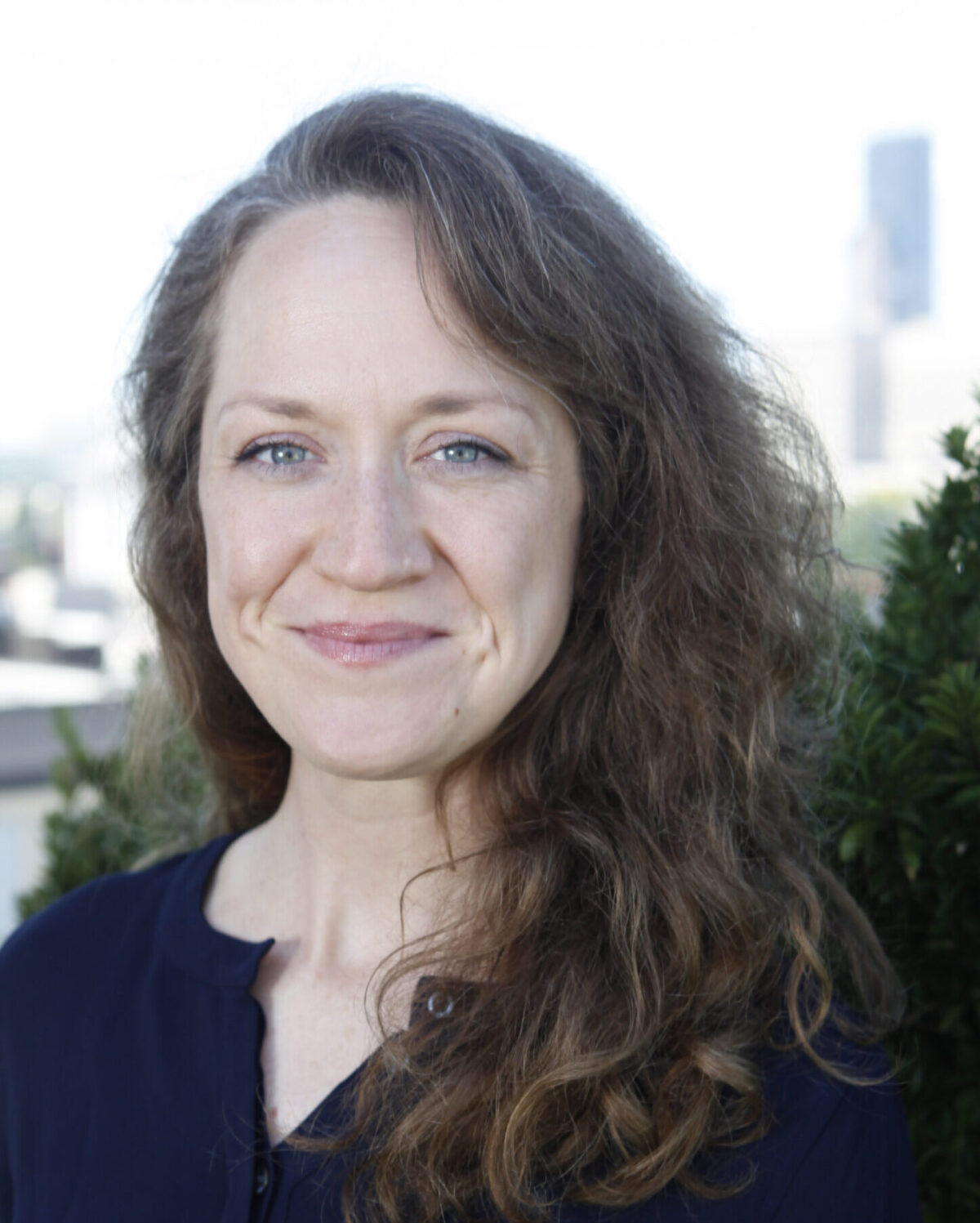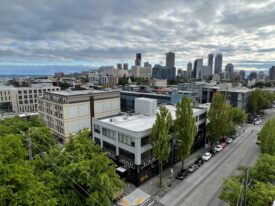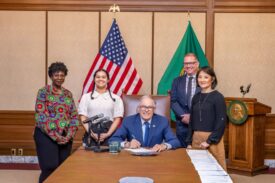Eric
On the occasion of Nelson Mandela’s passing, I suggest reading his lengthy obituary in the New York Times. I often recommend his autobiography, “The Long Walk To Freedom,” which moved me greatly as I read it during a visit to South Africa.
Contrary to many Americans’ assumptions (and somewhat glossed over in his own accounts) Mandela was not a Gandhi or MLK-like figure of nonviolent resistance:
In 1961, with the patience of the liberation movement stretched to the snapping point by the police killing of 69 peaceful demonstrators in Sharpeville township the previous year, Mr. Mandela led the African National Congress onto a new road of armed insurrection. It was an abrupt shift for a man who, not many weeks earlier, had proclaimed nonviolence an inviolable principle of the A.N.C. He later explained that forswearing violence “was not a moral principle but a strategy; there is no moral goodness in using an ineffective weapon.”
Anna
What would happen if we exchanged less of our time for money? Here’s another look at the 30-hour work week, with an interesting take on the environmental impact of working less:
Long hours affect more than us individually. They affect the planet. Martin Pullinger, an ecological economist at the University of Edinburgh, said that reducing the hours of full-time workers by 20 per cent—essentially cutting back to a four-day week—would reduce the carbon footprint of all working age households by 4.2 per cent in the United Kingdom and 6.4 per cent in the Netherlands, the nations studied. Yet he notes that in all the discussions of working hours and labour policy, environmental goals are rarely mentioned or even considered.
Another good one from Chris Mooney: 7 evolutionary reasons it’s easier for our brains to believe in God than in, um, evolution. In other words, science shows that we’re naturally pre-disposed against science.
There are Catholics up and down the Fahey family tree, but none on my particular branch. So, I never thought I’d say this, but I am starting to really like the Pope. If you haven’t heard this yet (it’s all over Facebook—Pope Francis goes viral! Never thought I’d say that either…), here he is on greed and economic inequality:
Some people continue to defend trickle-down theories which assume that economic growth, encouraged by a free market, will inevitably succeed in bringing about greater justice and inclusiveness in the world. This opinion, which has never been confirmed by the facts, expresses a crude and naïve trust in the goodness of those wielding economic power and in the sacralized workings of the prevailing economic system. Meanwhile, the excluded are still waiting. To sustain a lifestyle which excludes others, or to sustain enthusiasm for that selfish ideal, a globalization of indifference has developed.
Alan
Just in time for the Arctic Blast, here is a group of Siberian percussionists playing blocks of ice and making jaw-droppingly beautiful music.
#BlackFridayParking was the crowd-sourced social-media highlight of the week. A project of our friends at Strong Towns, it set out to vividly illustrate just how preposterously excessive parking quotas are—by photographing empty parking lots at shopping areas on Black Friday. The theory of parking quotas is that they’re set to accommodate the consumer hordes on the busiest days of the year, as I detailed in Park, Raving Mad. So, for example, Black Friday. But guess what, they overshoot. Thanks to Strong Towns, you can see the insanity in full color: scores of photos of unused parking on the one day it’s supposed to be full. Go here and scroll down to the slide show.
Climate hawks have been saying to each other all year that the movement for a clean-energy economy needs to learn from the gay-rights movement. It’s been heartening and impressive to watch the steady advance of marriage equality around the world, and specifically across Cascadia: first in Canada, then last year in Washington, and—if all goes well—in Oregon next year. If the analogy holds, then climate hawks would do well to understand the many years of work preparing the way and winning public support for today’s gay rights victories.
A good way to learn is the 1982 book by Randy Shilts about assassinated San Francisco Supervisor Harvey Milk, The Mayor of Castro Street. If you saw Sean Penn’s Academy Award-winning performance in the biopic Milk, you’ve seen the Hollywood version of this book. But if you actually want to understand the lessons for social change, you’ll want to read it yourself. Harvey Milk was a relentless person-to-person organizer. He built a powerful movement in San Francisco by constantly reaching out not only to gay San Franciscans but to others as well. He had a second sense for framing and messaging, and he knew exactly which fights to pick in order to draw national media attention. He also understood that the national ripple effects of his local campaigns mattered even more than local outcomes: electing a gay man to office in a major city sent a message of hope to closeted gay, lesbian, bisexual, and transgendered people everywhere.
The book makes all of this clear, and all of it is relevant to Cascadia’s climate battles. But the book also makes clear some other lessons that may ultimately hold greater significance. First, Milk was ordinary. He was no lifelong achiever. For most of his years, he was not a leader in any way. In fact, he assiduously avoided politics and teased friends for their activism. His particular gifts just happened to match exactly the leadership needs of his historical moment in San Francisco in the 1970s. He discovered his knack for leadership only when that moment caught up with him. In this way, he was a bit like Winston Churchill—the times found the leader they needed. For climate hawks, for all of us in fact, it’s comforting to realize the extent to which leadership is generated by the context.
Second, Milk was a consummate outsider. He infuriated California’s established gay leaders. They detested him, often with good reason, and he detested them back, sometimes with reason. He was more interested in building political power and creating a national LGBT uprising than he was in achieving near-term policy wins by playing well with the city’s political establishment. His focus was always on what message he was sending to young gays and lesbians, closeted and far away, who might hear about his efforts in the media. It’s not that he didn’t feel urgency about winning local victories. He did, but he understood that no victories would be secure and irreversible without a profound national change in consciousness—without a big, out, and proud movement. For this reason he intentionally picked fights with Anita Bryant and others in the burgeoning anti-gay backlash.
For climate hawks, who confront some of the most profitable industries in the world, plus the sedate gas-price conservatism of most voters, a similar perspective seems wise: our near-term wins only matter insofar as they help build a massive grassroots mobilization and public support for deeper reforms.
Third, Milk was free from fear. Like Presidents Lincoln and Johnson and like Dr. Martin Luther King, Jr., he had premonitions of his own premature death. Like King and Lincoln, he expected to be assassinated. He was, in a sense, dead already, so he felt liberated from worrying. Ordinary concerns and insecurities subsided, and he was able to focus single-mindedly on leaving the biggest mark he could on the injustices of his time. Like Johnson, expecting that he would die young, he was restlessly impatient. The clock was ticking, so he took bigger chances than he otherwise would have. We are all better off for his having done so.
And considering our universal mortality, we all—climate hawks especially—could learn from Harvey Milk about what it means to live well.
Serena
NPR’s Planet Money team took a stunning, multimedia look at what it takes to make a t-shirt, from the cotton to the outsourced labor to the shipping and more. Definitely worth a watch, especially as we get into the holiday season and perhaps take a moment to consider the production lines of all the various gifts we give and receive.
Speaking of which, among the loads of fair trade or local or artisan crafts now available online, I’ve been charmed by the likes of companies like Everlane (a clothing company specializing in super-transparent factories), Madesmith, and Zady (the latter two focusing on high-quality, craft-produced items and the stories behind their makers). Any other suggestions I may have missed on #MakersMonday?
Clark
This isn’t the first time this has made the rounds, but it still fascinates me…a time lapse depiction of every nuclear explosion between 1945 and 1998. Fast forward to about 1961 to see the fireworks. It’s easy to forget how profoundly the atomic bomb shaped the American psyche in those years; I still recall the debilitating mix of panic and powerlessness I’d feel in bed at night, thinking about a school air raid drill earlier in the day. The only way to get over it was to go into denial, and just think about something else…a reaction that reminds me an awful lot of how we react today to the specter of global climate change.
In the late 1970s, researchers at Simon Fraser University in British Columbia did some fascinating research on drug addiction. The researchers looked at how rats in cages responded to morphine, compared with rats housed in a specially constructed “rat park” – a veritable rodent playground, with aromatic wood shavings, toys, and plenty of space to socialize and raise young. And they found that, unlike their counterparts in sterile cages, rats living in the “rat park” weren’t particularly susceptible to drug addiction. This, of course, raises the possibility that drug addiction in humans is as much a response to stress and isolation as to the drugs themselves. I’ve seen a couple of recent articles on the topic, but none as effective as this cartoon narrative of the Rat Park experiments.










John Abbotts
My thanks to Eric for his link to the obituary of Nelson Mandela.
This weekend, while pattering around my apartment, I have been listening to Democracy Now’s tribute on December 6, still up today at http://www.democracynow.org/
As that program and the NYT obituary note, there were significant differences between the U.S. civil rights struggle, where Southern sheriffs opened fire hoses on demonstrators asking for legal changes, and South Africa, where a majority-black population was denied rights, in part because they were considered cheap labor. And the government’s response there to non-violence was to kill activists and dissenters, as Eric’s quote reports.
In the l990s, I remember telling a housemate that there were two things I had never expected to see in my lifetime, which were the fall of the Berlin Wall, and Nelson Mandela’s release from prison, much less that he would become President of his nation.
At the time, I also never thought that I would see a black man become President of the U.S., much less his historic re-election.
To paraphrase Martin Luther King, “the arc of history is long, but it bends toward justice.”
Those events give hope for optimism, but as Sightline’s posts have noted, there is still much work to be done. Among these are developing more sustainable economic and energy policies, including addressing what has become the defining issue of the Anthropogenic Age, global climate change. It has become a cliché to refer to “the curse of living in interesting times,” but we are still living them.
I also found a moving version by the late Amy Winehouse of “Free Nelson Mandela,” on the occasion of his 90th Birthday. I hope linking to it does not violate any copyright issues, especially since it was a benefit concert 5 years ago, but the tribute is at http://www.youtube.com/watch?v=LIe7wQ_YX7Y
qmmayer
I’m not a Lincoln scholar by any means, but at least one notable account of Lincoln having a premonition of his own death was discounted in a recent NYT’s article:
The story [of Lincoln’s dream] wasn’t published by [Lincoln’s bodyguard Ward Hill Lamon] himself, but posthumously by his daughter in 1895. In “Recollected Words of Abraham Lincoln,” the editors Don and Virginia Fehrenbacher assign letter grades to various Lincoln quotations. From “A,” a high level of reliability, all the way down to “E,” highly suspect. Of this anecdote, the Fehrenbachers write, “Lamon’s confused chronology well suits the fantastic quality of the whole story, which has nevertheless been accepted by a number of biographers and other writers.” They gave it an “E.”
http://opinionator.blogs.nytimes.com/2013/12/01/the-interminable-everlasting-lincolns-prologue/